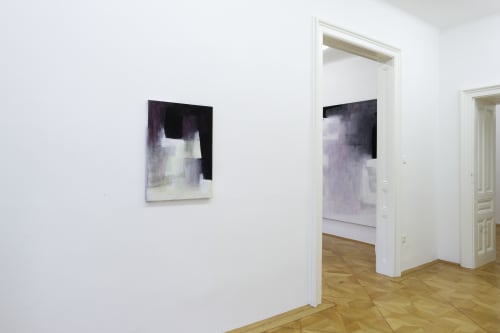Walter Vopava's pictures are to be understood as painting and as nothing else.
A pure accumulation of pigments, the juxtaposition of light and dark - as a battle of light that forces its way through the darkness of colour and thus seems to make the pictures glow, as it were.
Walter Vopava's monumental canvases radiate an unparalleled power in their light, transcendent treatment of colour. Walter Vopava's art negates any reference to nature, no imagination should arise when looking at his works, no titles provide a path. The pictures are what they are: pure self-reflective painting.
This possibility of sensually sensitive abstraction has a long tradition in painting. Even if the first non-representational works in the history of art were unmistakably abstracted from the object perceived in nature, it was later primarily the Abstract Expressionists - think of Franz Kline - who created vibrant paintings with powerful brushstrokes in the sense of grand gestures instead of naturalistic pathos. Vopava's canvases make do with a small colour palette. Black and white as opposing poles and in between the nuances of green, pink and grey. While his works in the 1990s were still characterised by an earthy colour palette, his current works are often light structures. The white pushes into the foreground, the colour pigments used look like veils and create a depth that makes these pictures so exciting. The viewer can literally immerse his senses in a painting that no longer allows for a fixed point.
Vopava's pictures "happen" everywhere. Be it the dark, almost black bar or the almost inconspicuous light pink tone. The eye jumps and reflects in its very own system. Walter Vopava's works are an expression of painting and colour, far removed from emotion, detached from gesture and without any subject matter.
In addition to more recent canvases, the bechter kastowsky gallery is also showing a series of works on paper in the exhibition. These are in part more direct, faster and rougher - but at the same time also an airy complement to the monumental canvas.
Walter Vopava was honoured with the Austrian Art Prize in the field of fine arts in 2011.


